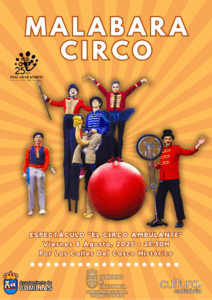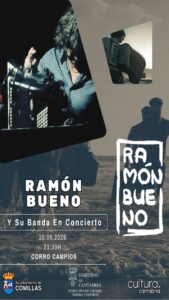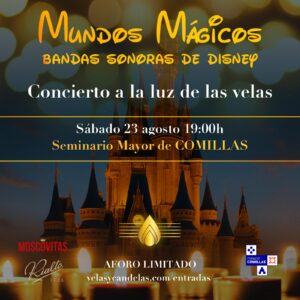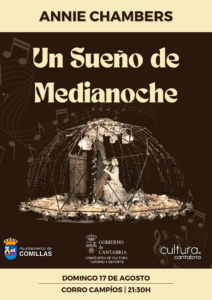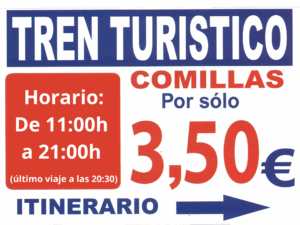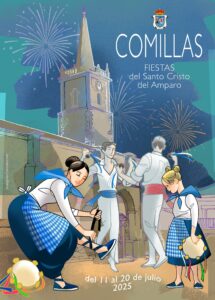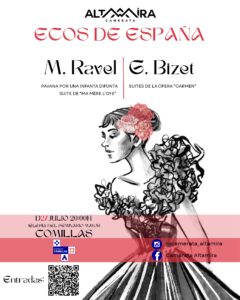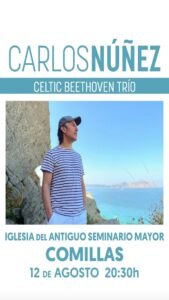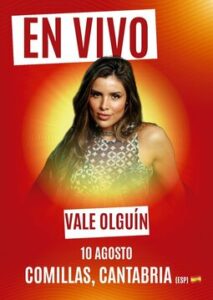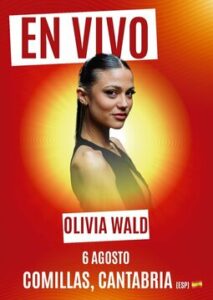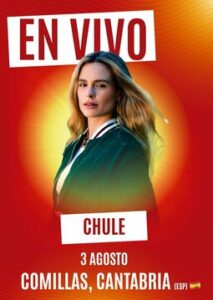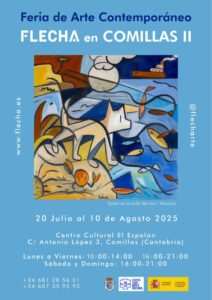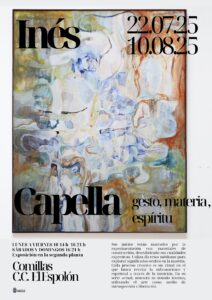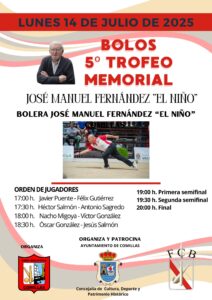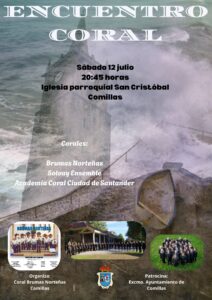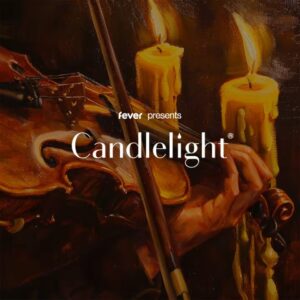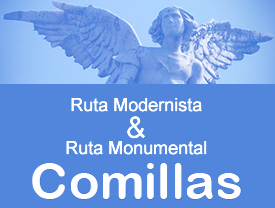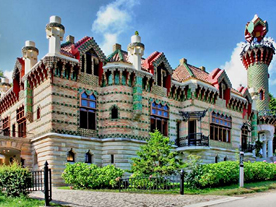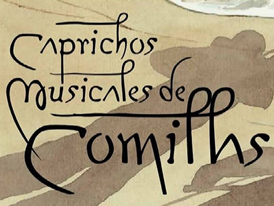Plan de Sostenibilidad
Malabaracirco
18 de July de 2025
Malabaracirco Date: 8 de agosto Hour: 21:30 Place: Calles de Comillas
Concierto de Ramon Bueno y su banda
Concierto de Ramón Bueno y su banda Date: 10 de agosto Hour: 21.30H Place: Corro Campíos Tickets: Free
Bandas Sonoras de Disney a la Luz de las Velas
Bandas Sonoras de Disney a la Luz de las Velas Disney Music Date: 23 de agosto Hour: 19:00h Place: Iglesia del Antiguo Seminario Mayor de Comillas, Universidad Pontificia Tickets: Velasycandelas.com
ANNIE CHAMBERS “UN SUEÑO DE MEDIANOCHE”
Annie Chambers’ show, “Un Sueño de Medianoche”. Let yourself be enveloped by the magic of the harp in a unique and unforgettable experience! Date: Sunday, August 17. Time: 21:30H. Place: Corro Campíos.
TOURISTIC TRAIN OF COMILLAS 2025
16 de July de 2025
COMILLAS TOURIST TRAIN 2025 Ticket price: €3.50 Duration: approximately 30 minutes Route: Departure from the Sobrellano parking (Paseo Marqués de Comillas) – Historic Center – El Duque – Monument to the Marquis of Comillas – Panoramic view of Comillas Beach from Paseo Manuel Noriega – Port – Cemetery – Front of the Old Pontifical University […]
DÍA DEL SANTO CRISTO DEL AMPARO 2025
MIERCOLES, 16 DE JULIO Día Grande 12:00 MISA SOLEMNE del Santo Cristo del Amparo 14:00 Animación por la Charanga “ÉLITE” Plazas y calles 20:00 Animación por la Charanga “KALI KALI” Plazas y calles 21:30 Gran Romería Orquesta “GRUPO BEATRIZ” Corro Campíos 23:30 Verbena Orquesta “GRUPO BEATRIZ” Corro de Campíos Consulta programación completa de las fiestas […]
CAMERATA ALTAMIRA “ECOS DE ESPAÑA”
Venta de entradas https://vivetix.com/es/entradas-ecos-de-espana-iu5f?s=link Más información: 659 176 801
CONCERT CARLOS NÚÑEZ, XIRA LUGARES MÁXICOS 2025
12 de July de 2025
CONCERT CARLOS NÚÑEZ, XIRA LUGARES MÁXICOS 2025 Time: 20:30h Place: Seminario Mayor de Comillas Tickets: carlosnunezentradas.com
CONCERT VALE OLGUÍN, LA CAPILLA MUSIC HALL
CONCERT VALE OLGUÍN Time: 21:00h Place: Iglesia Antiguo Seminario Mayor, Universidad Pontificia de Comillas Organizer: La Capilla Music Hall
CONCERT OLIVIA WALD, CAPILLA MUSIC HALL
CONCERT OLIVIA WALD Time: 21:00h Place: Iglesia Antiguo Seminario Mayor, Universidad Pontificia de Comillas Organizer: La Capilla Music Hall
CONCERT CHULE, LA CAPILLA MUSIC HALL
CONCERT CHULE Time: 21:00h Place: Iglesia Antiguo Seminario Mayor, Universidad Pontificia de Comillas Organizer: La Capilla Music Hall
FAIR FLECHA EN COMILLAS II
Contemporary Art Fair “Flecha en Comillas II”. 20 July to 10 August 2025. El Espolón Cultural Centre. More information: www.flecha.es
EXHIBITION “GESTO, MATERIA, ESPÍRITU” BY INÉS CAPELLA
Exhibition ‘gesto, materia, espíritu’ by Inés Capella. Exhibition on the second floor of the Centro Cultural El Espolón. From 22 July to 10 August. Monday to Friday 10-14H and 16-21H. Saturday and Sunday 16-21H.
JUAN DÍAZ’S EXHIBITION “ACUARELAS”
Exhibition. Watercolours by Juan Díaz. Exhibition from 21 July to 10 August 2025. Exhibition rooms of the old Town Hall.
CANDLELIGHT “TRIBUTO A COLDPLAY”
21:00 H – Iglesia del Seminario Mayor de Comillas Concierto a la luz de las velas Compra de entradas: www.feverup.com
CANDLELIGHT “LAS CUATRO ESTACIONES DE VIVALDI”
19:00 H – Iglesia del Seminario Mayor de Comillas Concierto a la luz de las velas Compra de entradas: www.feverup.com


